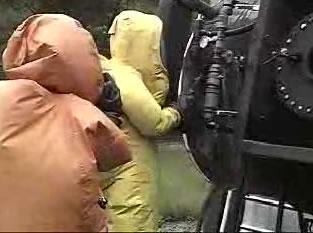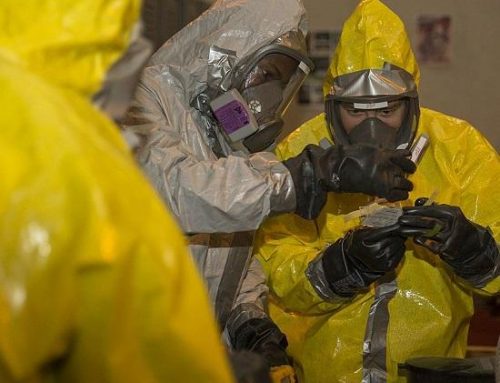Work practices and engineering controls are important components of a successful Hazardous Waste Operations and Emergency Response (HAZWOPER) program. Work practices are procedures that workers follow to minimize their exposure to hazards. At the same time, engineering controls are physical barriers or ventilation systems that are put in place to control or eliminate hazards. In this article, we’ll provide an overview of work practices and engineering controls and offer some helpful tips for businesses looking to implement them.
What are Work Practices and Engineering Controls?
Work practices are procedures that workers follow to minimize their exposure to hazards. Examples of work practices include washing hands before and after handling chemicals, wearing personal protective equipment (PPE), and following established protocols for handling and using chemicals.
Engineering controls are physical barriers or ventilation systems that are put in place to control or eliminate hazards. Examples of engineering controls include fume hoods, ventilation systems, and enclosures.
Why are Work Practices and Engineering Controls Important?
Work practices and engineering controls are important because they help protect workers from potential hazards. By following established work practices and using engineering controls, businesses can minimize the risk of exposure to hazards and help ensure the safety of their employees.
In addition, work practices and engineering controls are often required by law or regulatory agencies, such as the Occupational Safety and Health Administration (OSHA), as a means of ensuring the safety of workers and the general public. By implementing effective work practices and engineering controls, businesses can help ensure compliance with regulatory requirements.
Tips for Implementing Work Practices and Engineering Controls
Here are 10 tips to help your business implement effective work practices and engineering controls:
- Conduct a hazard assessment: Conduct a hazard assessment to identify the hazards present in your workplace and the potential risks associated with them.
- Determine the appropriate work practices and engineering controls: Based on the results of the hazard assessment, determine the appropriate work practices and engineering controls to minimize the risk of exposure to hazards.
- Involve employees in the process: Involving employees in developing work practices and engineering controls can help ensure their buy-in and support for the program.
- Train employees on work practices and engineering controls: Proper training is crucial to ensure that employees understand and follow established work practices and know how to use engineering controls properly.
- Regularly review and update work practices and engineering controls: Regularly review and update your work practices and engineering controls to ensure they are still effective and in compliance with any changes in laws or regulations.
- Ensure that all employees are trained on work practices and engineering controls: All employees, including new hires and temporary workers, are trained on work practices and engineering controls.
- Ensure engineering controls are properly maintained: Proper maintenance is crucial to ensure that engineering controls function effectively. Regularly inspect and maintain engineering controls to ensure they are in good working order.
- Follow established protocols: Follow established protocols for implementing work practices and engineering controls to ensure consistent and reliable training.
- Keep thorough records: Maintain thorough records of all work practice and engineering control activities.
- Supplement work practices and engineering controls with ongoing training: Work practices and engineering controls should be the starting point for ongoing safety training. Consider implementing regular safety training sessions or refresher courses to keep employees informed and up-to-date on safety protocols and procedures.
Conclusion
Work practices and engineering controls are important components of a successful HAZWOPER program. By implementing effective work practices and engineering controls and regularly reviewing and updating your program, you can help protect the health and well-being of your employees and the community. It’s worth noting that work practices and engineering controls are just one part of a successful HAZWOPER program. Other key elements include personal protective equipment, monitoring procedures and equipment, and emergency response planning. To ensure the safety of your workers and compliance with regulatory requirements, it’s important to have a well-rounded program that addresses all of these areas.
Excerpt from our Work Practices and Engineering Controls Online Training Program
The following outline summarizes the major points of information presented in the program. The outline can be used to review the program before conducting a classroom session, as well as in preparing to lead a class discussion about the program.
Any doctor will tell you that the best way to treat a medical problem is to prevent it from happening in the first place.
— This applies to hazardous materials, as well.
— The most effective method of protecting yourself from them is to stay as far away as possible.
Unfortunately, steering clear of these materials is often not an option if:
— Your company uses them in its work processes.
— You work in hazardous waste operations or emergency response.
In these situations, your job requires you to handle unsafe chemicals… to contain, transport, or dispose of them.
— You won’t be able to avoid them any more than a plumber can avoid working with pipes.
But you can still keep contaminants away from your face, skin and from out of your lungs if you take the proper precautions.
— This is what “work practices” and “engineering controls” are all about.
— They make up your first line of defense against hazardous substances.
Work practices are administrative methods for isolating workers from hazardous materials.
— For instance, keeping non-essential personnel a safe distance from hazardous areas is a work practice that should be followed at all facilities.
— Labeling chemical containers prior to shipment is a work practice that is used in transport situations.
In contrast to work practices, engineering controls are devices that keep employees away from hazardous materials… or minimize injuries, should they occur.
Typical examples of engineering controls include:
— Pressurized equipment cabs.
— Remote-controlled, material-handling equipment.
— Ventilation systems for removing airborne contaminants.
The most common work practice is to keep personnel a suitable distance away from contaminated areas.
— Other than this, no single work practice should necessarily be followed at all worksites.
The most effective work practices can vary greatly, depending on:
— The chemicals involved.
— The type of work that needs to be done with or around them.
For example, a typical work practice when using water-reactive flammables (such as lithium) is simply to keep water away from them.
— This means no water can be used when decontaminating workers exposed to these chemicals.
— Also, fires involving water-reactive flammables must be extinguished with special materials.
You wouldn’t follow this work practice, however, if you were dealing with non-water-reactive chemicals.
— Water is used to decontaminate these substances, and fires involving them can safely be put out with water.










